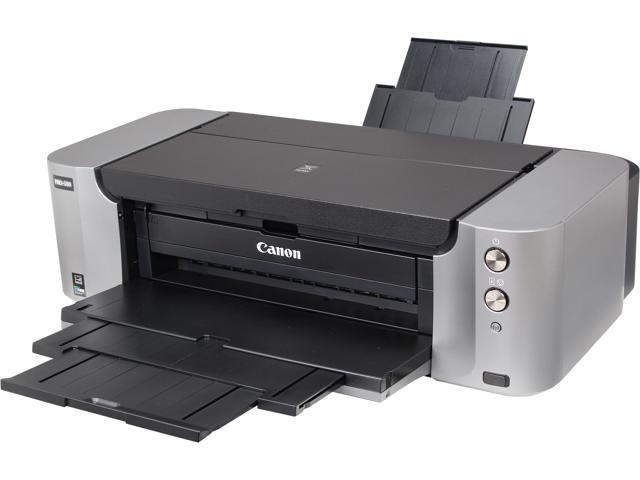

I only did a couple of prints from my iPad, but the process couldn’t be easier - the iPad recognizes any AirPrint printer on the same network and sends the files over. For iOS device users like the iPad or iPhone, the Pro-100 also supports AirPrint. After this, the printer worked flawlessly on WiFi.Ĭonnection options include USB, Ethernet, and the above mentioned WiFi. After several tries, I finally plugged it into the computer via USB to complete setup. I couldn’t get the setup program to recognize the printer on WiFi. Setting up on my network was more problematic than normal. Cartridge size is the same as the previous Pro9000 Mark II, which is to say that you should have spares on hand if you do a large volume of printing. Replacement ink is about $17 per cartridge.
#PIXAM PRO 100 PRINTING INSTALL#
The printer is packaged in the usual Canon way - neatly with a lot of blue tape to remove, and with good directions, starting with the quick start installation guide.Īfter unpacking and creating a small mountain of tape strips, you’ll install the print head, and into this the 8 ink cartridges - Black, Cyan, Magenta, Yellow, Photo Cyan, Photo Magenta, Gray, and Light Gray. Other new features include the same image optimization technology found in the Pro-1 printer, a new Print Studio Pro plug-in for better printing directly from Photoshop and Digital Image Pro, support for printing on CD/DVD printable discs, and AirPrint for wireless printing from iOS devices as well as WiFi. In a change from the original model, this printer uses three blacks - black, gray, and light gray, for better black and white printing than was previously possible. Based on the top of the line Pixma Pro-1, this is a 13x19 printer that uses Canon’s ChromaLife 100+ inks.

As part of the line of updates to their desktop printer line up, Canon has replaced this printer with the new Pixma Pro-100.

If you’re looking for nothing more than exceptional photographs you can hang on your wall and admire for decades to come, the Pro-100 is the only sensibly priced choice.Canon’s Pixma Pro9000 Mark II printer has been a popular choice for photographers that want to print with dye inks (rather than pigments) with rich color and good print life. Yet, without doubt the Pro-100’s chief selling point is the stunning quality of the prints that flop into the output tray. The Ethernet port may appeal to businesses, and there are Wi-Fi and AirPrint facilities for domestic users. It’s comparatively and commendably light on features, with only two buttons on the front and no whiff of a touchscreen or other needless fripperies. Indeed, the Pro-100 is little other than a remarkably good photo printer. This certainly shouldn’t be your sole printer, unless you very rarely require document prints. In addition, there’s no higher-capacity pigment black cartridge, which means document printing costs will be brutal. However, it’s pretty slow, taking 2mins 11 seconds to print a five-page colour brochure. Our only criticism of the Pro-100’s output is that it veers towards over-saturation on bright reds.ĭespite being primarily a photo printer, the Pro-100 is also perfectly capable of delivering colour documents on plain A4 paper.
#PIXAM PRO 100 PRINTING SKIN#
The skin tones on our studio portrait were entirely natural looking, too, where consumer-level inkjets often give this test a slightly ruddy complexion. The subtle gradient in the background of our black-and-white product shot dissolvedbeautifully, and while many cheaper printers deliver an unwanted colour tint on black-and-white photos, the Pro-100 left them perfectly clean. This means the Pro-100 is also brilliant at printing black-and-white photographs. This is no doubt because three of those eight inks are light grey, grey and black, where cheaper printers rely on a single black cartridge. Likewise, there were clear visual steps between the darker greys and black on the test sheet that cheaper printers are unable to reproduce. On our Colour Collective test print, the Pro-100 delivered slight variations in skin tones on the model’s face that most of the other printers in this test blended into one indistinct mass.


 0 kommentar(er)
0 kommentar(er)
